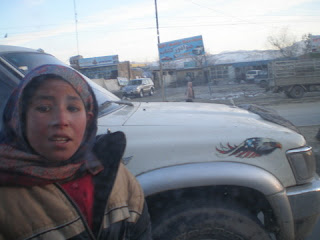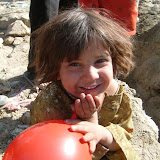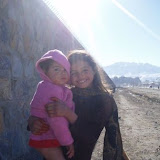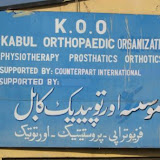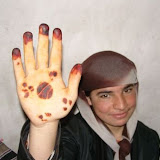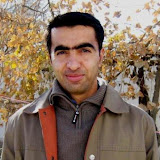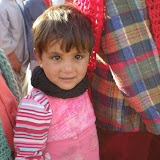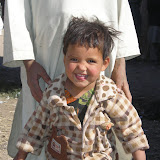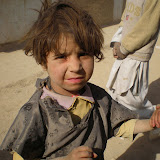"Most of our obstacles would melt away if, instead of cowering before them, we should make up our minds to walk boldly through them."
-Orison Swett Marden(1850 - 1924)
-
"The pleasures of the world are deceitful; they promise more than they give. They trouble us in seeking them, they do not satisfy us when possessing them and they make us despair in losing them."
-Madame de Lambert
-
"If you are distressed by anything external, the pain is not due to the thing itself, but to your estimate of it; and this you have the power to revoke at any moment."
-Marcus Aurelius AntoninusRoman Emperor, A.D. 161-180 (121 AD - 180 AD)
"Do something every day that you don't want to do; this is the golden rule for acquiring the habit of doing your duty without pain."
-Mark TwainUS humorist, novelist, short story author, & wit (1835 - 1910)
"But pain... seems to me an insufficient reason not to embrace life. Being dead is quite painless. Pain, like time, is going to come on regardless. Question is, what glorious moments can you win from life in addition to the pain?"
-Lois McMaster Bujold, "Barrayar", 1991US science fiction author I apologize for not publishing a post yesterday. I blame it on Elvis. I usually watch a movie in the corner of the computer screen when work on my posts late at night. Last night I was watching a disc that I recently bought that is packed full of old Elvis concerts and movies. I just got so distracted by them and I ended up watching them until 2:00am.
To make up for it today's post will be super-sized. It will be for only the most dedicated 6 M.I.K. readers. I wanted to talk about some of the landmarks that we pass by when we drive and some other places that are significant to Kabul. All of the descriptions were borrowed from other sites such as Wikapedia, Survival Guide to Kabul, and the American International School of Kabul. I also wanted to highlight Sharbat Gula. She is an Afghan girl that appeared on the cover of National Geographic. The caption that I included was directly from National Geographic.
Just to recap yesterday's events. At the hospital it was business as usual. The ER nurse was putting anti-fungal cream on a very large burn. I asked him why he was doing it and he said that the ER doctor told him to put some cream on the burn. I had him wipe it off and reapply the right kind of burn cream.
After the hospital we went to the slaughter house to have lunch. I know, having lunch at a slaughter house is like eating sushi at an aquarium. We sat on the floor, on a big carpet, in a big circle and were served the usual Afghan meal.
Here is someone pouring warm water so we could clean our hands.
Here is someone rolling out a plastic tarp so we do not make the carpet dirty.
Here is the meal.
I wanted to spend the rest of the time highlighting some of the city's interesting sights. I am only including places that have not been mentioned in previous posts.
Here is the Spinzar Hotel. Translated Spinzar means white silver.
Here is The Column To Knowledge and Ignorance
"The inscription on the monument states that this column was erected so that coming generations may remember those who sacrificed their lives in the heroic struggle of knowledge against reactionary ignorance. There are several interesting emblems on this theme carved onto the sides of the column. On the eastern face, for instance, there is a book, a pen and an inkpot above crossed swords signifying the fight for education. The emblem, known as the Nishan-i-Maaref, was worn by all students in Kabul during King Amanullah's reign. The monument is set among huge boulders beside the Kabul River."
Here is the KABUL MUSEUM
-
"The Kabul Museum is in front of the Darulaman Palace and is undergoing extensive renovation. The museum was famous in central Asia for its prehistoric to 20th century collection. But over the last ten years 70% of the collection has been lost. The museum is closed but the editors of The Survival Guide did manage to get inside and meet the director and his deputy. The director Mr Omara Khan Masoudi, who’s worked at the museum for 24 years, showed us the rooms being renovated; mostly for storage though he hopes exhibitions will open by the end of 2003. In the foyer is a magnificent huge black marble basin dating from the 15th Century. Back then the basin would be filled with juice for the pilgrims to the Sultan Mir Wais Baba shrine in Kandahar to drink from. The basin is surrounded in Islamic text. On the wall down the corridor is a 12th Century calligraphic frieze from Lashkar Gah. Opposite the frieze is a 12th century reconstructed mosque also from Lashkar Gah. There’s a lovely 19th Century Arabic style marble door that belonged to the royal family. In March 2003 the main corridor was full of old steel filing cabinets that used to house the museum’s collection of 40,000 coins. Sadly all the coins, many dating from the time of Alexander the Great, have been looted. At the time of writing, rooms were being restored with help from organisations like the British Museum and UNESCO, but there were no exhibition rooms open. The library has a collection of books, mostly stored in trunks. Fortunately the Taliban didn’t destroy many of the museum’s books, but outside you’ll see the destroyed statues of lions and horses.
-
The second floor of the museum was completely destroyed in a fire in the mid-90s. In 1995 the museum did try and start the process of retrieving objects but then the destruction began under the Taliban who destroyed around 2,000 pieces. The museum director says there’s a huge job to be done to restore the museum and the collection. He’s also worried that people are still looting Afghanistan’s heritage: ‘I’m sure there are some ancient pieces on Chicken Street, but we haven’t checked’ he says. Though he says most of the ‘guns on Chicken Street are new and not ancient.” Mr Masoudi also says many of the museum’s pieces are still in secret hiding."
ROYAL FAMILY MAUSOLEUM
"King Nadir Shah’s Mausoleum is the resting place for the recent monarchs of Afghanistan’s royal family. King Zahir Shah returned to Kabul in April 2002 after 29 years in exile. King Zahir’s wife, Queen Homaira never made it back to her homeland. She died in Italy at the age of 86 while waiting to rejoin her husband in Kabul and is now buried here The Queen is survived by seven of her nine children and by 14 grandchildren. Usually there’s a man on duty at the mausoleum who will take you into the catacombs. There are good views of the city from here giving you an idea of how the infighting Mujaheddin fought over the high ground and just destroyed the city from it."
SHAH-DO-SHAMSHIRA MOSQUE

"This beautiful square building on the Kabul River opposite the Pul-I-Shah-do-Shamshira Bridge is the Mosque of the King of Two Swords. According to legend the mosque takes its name from a 7th century battle that took place between attacking Islamic troops and defending Hindus. Despite fighting heroically with a sword in each hand, one of the Muslim head commanders fell in battle. It is his memory that is honoured by the mosque today. The two-storey edifice was built in the 1920s on the order of King Amanullah’s mother on the site of one of Kabul’s first mosques. Today, the building has seen better days. Bullet holes can be seen in the façade, but the doors are still open to worshippers and visitors alike. Women are advised to visit on Wednesdays when the mosque is closed to men."
The OLYMPIC STADIUM
Here is the firing wall that the Taliban used to execute a lot of people.

Here is MASSOUD CIRCLE.
-
-
-

-
Kabul is a city of contrasts. It has its rich and its poor. It has its old and its new buildings. 99% of the people are incredibly friendly and warm but there are 1% that want to cause trouble.



Lastly, I wanted to include the story of Sharbat Gula. Even though it has been many years since her early photo appeared it can still be seen in many places. I think that it is a fascinating story.

"The Story of Sharbat Gula: Her eyes have captivated the world since she appeared on our cover in 1985. Now we can tell her story. Names have power, so let us speak of hers. Her name is Sharbat Gula, and she is Pashtun, that most warlike of Afghan tribes. It is said of the Pashtun that they are only at peace when they are at war, and her eyes—then and now—burn with ferocity. She is 28, perhaps 29, or even 30. No one, not even she, knows for sure. Stories shift like sand in a place where no records exist. Time and hardship have erased her youth. Her skin looks like leather. The geometry of her jaw has softened. The eyes still glare; that has not softened. “She’s had a hard life,” said McCurry. “So many here share her story.”
-
Consider the numbers. Twenty-three years of war, 1.5 million killed, 3.5 million refugees: This is the story of Afghanistan in the past quarter century. Now, consider this photograph of a young girl with sea green eyes. Her eyes challenge ours. Most of all, they disturb. We cannot turn away. “There is not one family that has not eaten the bitterness of war,” a young Afghan merchant said in the 1985 National Geographic story that appeared with Sharbat’s photograph on the cover.
-
She was a child when her country was caught in the jaws of the Soviet invasion. A carpet of destruction smothered countless villages like hers. She was perhaps six when Soviet bombing killed her parents. By day the sky bled terror. At night the dead were buried. And always, the sound of planes, stabbing her with dread. “We left Afghanistan because of the fighting,” said her brother, Kashar Khan, filling in the narrative of her life. He is a straight line of a man with a raptor face and piercing eyes. “The Russians were everywhere. They were killing people. We had no choice.” Shepherded by their grandmother, he and his four sisters walked to Pakistan. For a week they moved through mountains covered in snow, begging for blankets to keep warm. “You never knew when the planes would come,” he recalled. “We hid in caves.”
-
The journey that began with the loss of their parents and a trek across mountains by foot ended in a refugee camp tent living with strangers. “Rural people like Sharbat find it difficult to live in the cramped surroundings of a refugee camp,” explained Rahimullah Yusufzai, a respected Pakistani journalist who acted as interpreter for McCurry and the television crew. “There is no privacy. You live at the mercy of other people.” More than that, you live at the mercy of the politics of other countries. “The Russian invasion destroyed our lives,” her brother said. It is the ongoing tragedy of Afghanistan. Invasion. Resistance. Invasion. Will it ever end? “Each change of government brings hope,” said Yusufzai. “Each time, the Afghan people have found themselves betrayed by their leaders and by outsiders professing to be their friends and saviors.”
-
In the mid-1990s, during a lull in the fighting, Sharbat Gula went home to her village in the foothills of mountains veiled by snow. To live in this earthen-colored village at the end of a thread of path means to scratch out an existence, nothing more. There are terraces planted with corn, wheat, and rice, some walnut trees, a stream that spills down the mountain (except in times of drought), but no school, clinic, roads or running water. The young Afghan refugee who stared from the cover of National Geographic in June 1985 was an enigma for 17 years. What was her name? Had she survived?
-
This past January photographer Steve McCurry joined a crew from National Geographic Television & Film to methodically search for her. They showed her photograph around the refugee camp in Pakistan where McCurry had encountered her as a schoolgirl in December 1984. Finally, after some false leads, a man who had also lived in the camp as a child recognized her. Yes, she was alive. She had left the camp many years before and was living in the mountainous Tora Bora region of Afghanistan. He said he could find her, and three days later he and a friend brought her back to the camp. There, the remarkable story of this woman, Sharbat Gula, began to be told. “She’s as striking as the young girl I photographed 17 years ago,” says Steve McCurry. Then as now, Sharbat Gula looks at the world with uncompromising, unforgettable eyes. Until she was shown the June 1985 Geographic this year, she had no idea that her image had been seen by millions. People have told McCurry that her face alone inspired them to aid refugees.
The focus of Sharbat Gula’s life is her husband, Rahmat Gul, and their daughters. She remembers her wedding day, when she was perhaps 16, as a happy one—possibly, her older brother told the Geographic team, the only happy day of her life. She became an orphan and refugee of war at about age six. Soviet bombing killed her parents, and her grandmother led her and her brother and sisters on foot, in winter, to Pakistan, where they lived in various camps. Here Sharbat holds Zahida, age 3, and her husband holds one-year-old Alia. Their oldest, Robina, is 13. A fourth daughter died in infancy. Sharbat says she hopes that her girls will get the education she was never able to complete. Sharbat Gula does not know her exact age, but she is likely 28, 29, or 30.
In the mid-1990s, during a lull in the fighting that has rocked Afghanistan for most of her life, she returned to her village. Hers has been a hand-to-mouth existence. She had not been photographed since Steve McCurry made her portrait in 1984, and she only agreed to be photographed again—to appear unveiled, without her burka—because her husband told her it would be proper. She is a private woman, uncomfortable with the attention of strangers. A devout Muslim, she attributes her survival to the 'will of God.'
Is Sharbat Gula without question the famous “Afghan girl”? Though she remembers being photographed in the school tent of her refugee camp, and her resemblance to the girl in McCurry’s photo is apparent, the Geographic sought expert opinion. In Pakistan, ophthalmologist Mustafa Iqbal examined Sharbat, with her husband at her side. Iqbal felt “100 percent certain” that her iris patterns and eye freckles matched those in McCurry’s photo. A scar on the right side of her nose was another distinguishing mark. Iris patterns are even more individual than fingerprints. So the Geographic turned to the inventor of automatic iris recognition, John Daugman, a professor of computer science at England’s University of Cambridge. His biometric technique uses mathematical calculations, and the numbers Daugman got left no question in his mind that the haunted eyes of the young Afghan refugee and the eyes of the adult Sharbat Gula belong to the same person.
To read more about this story please visit National Geographic's website."
Thanks for reading.


































